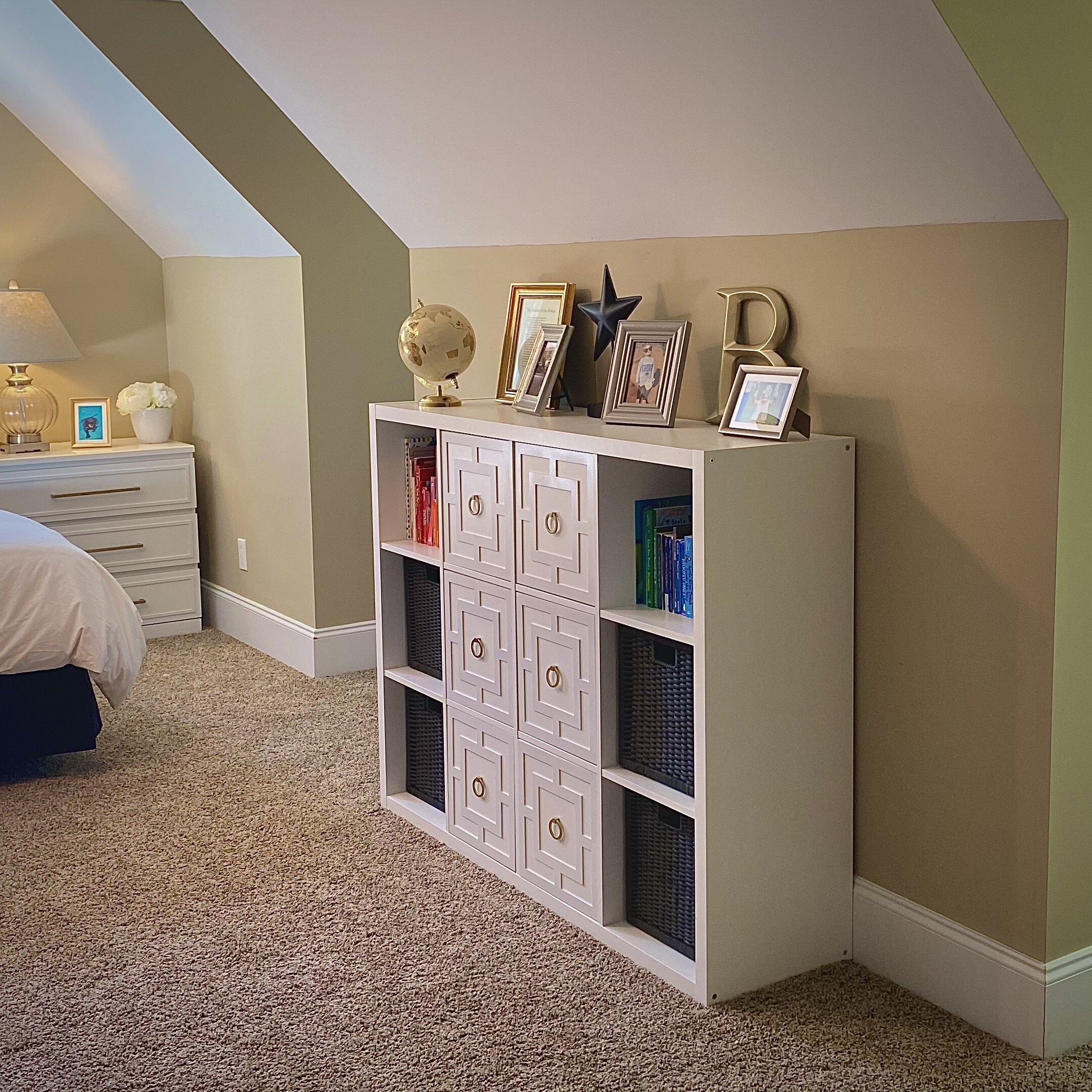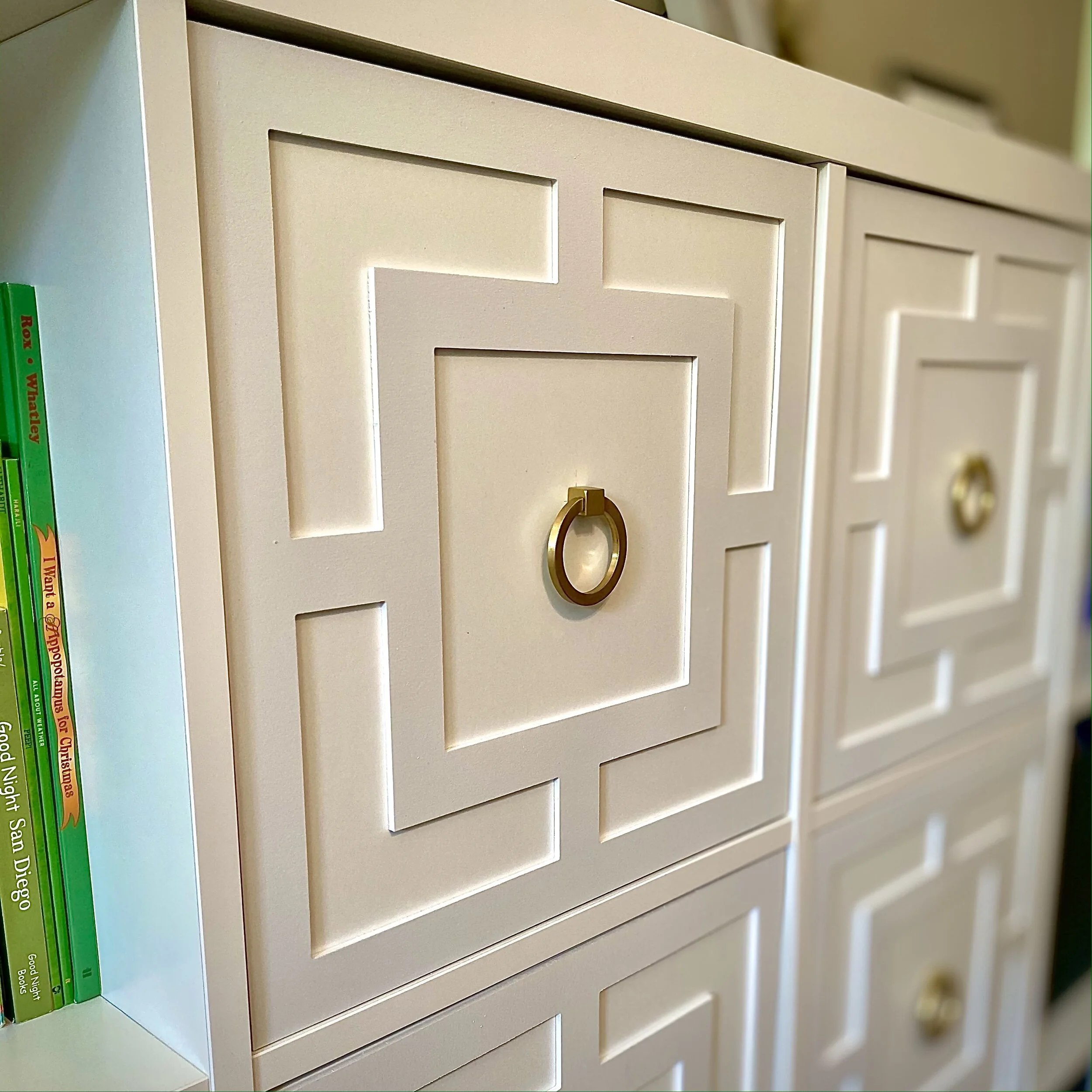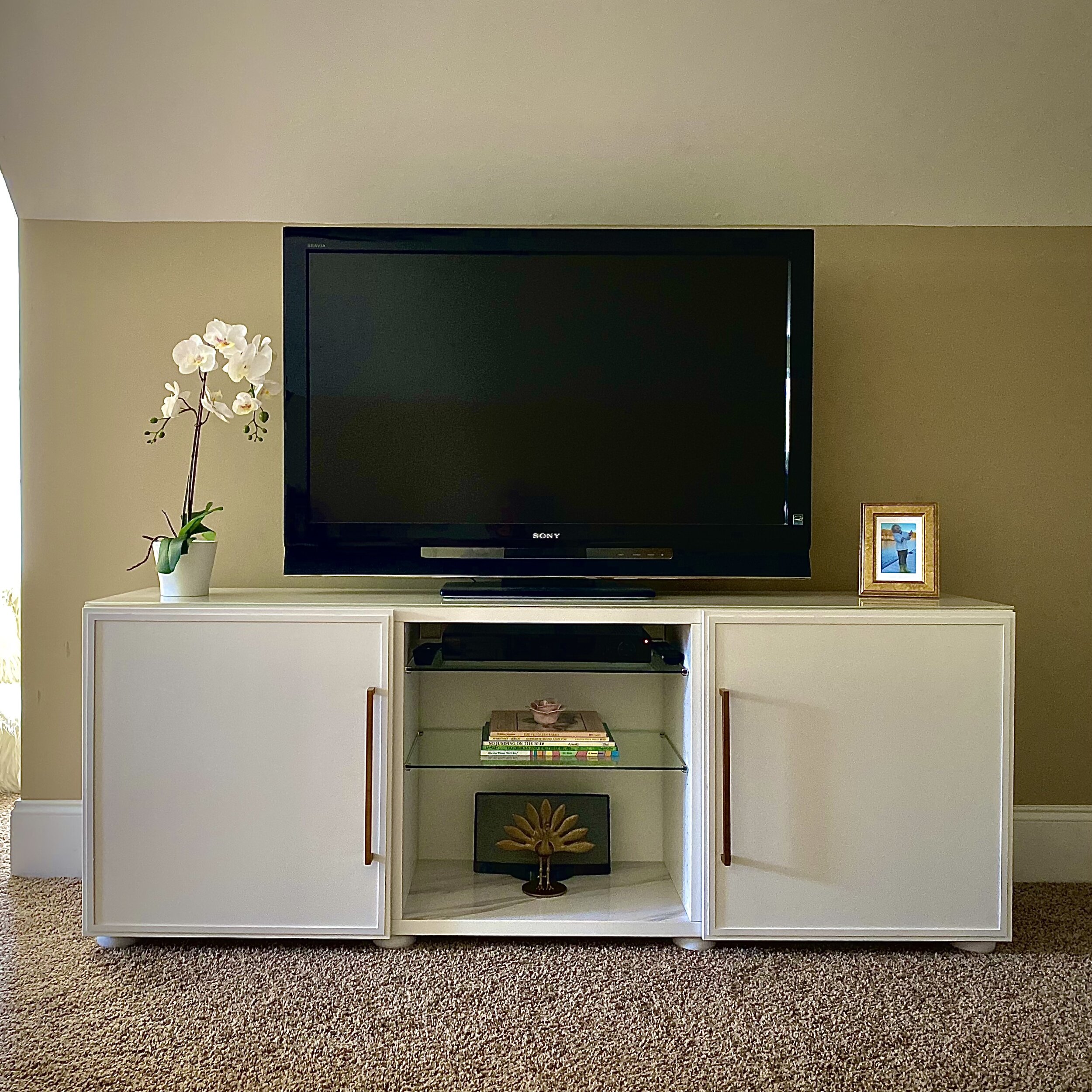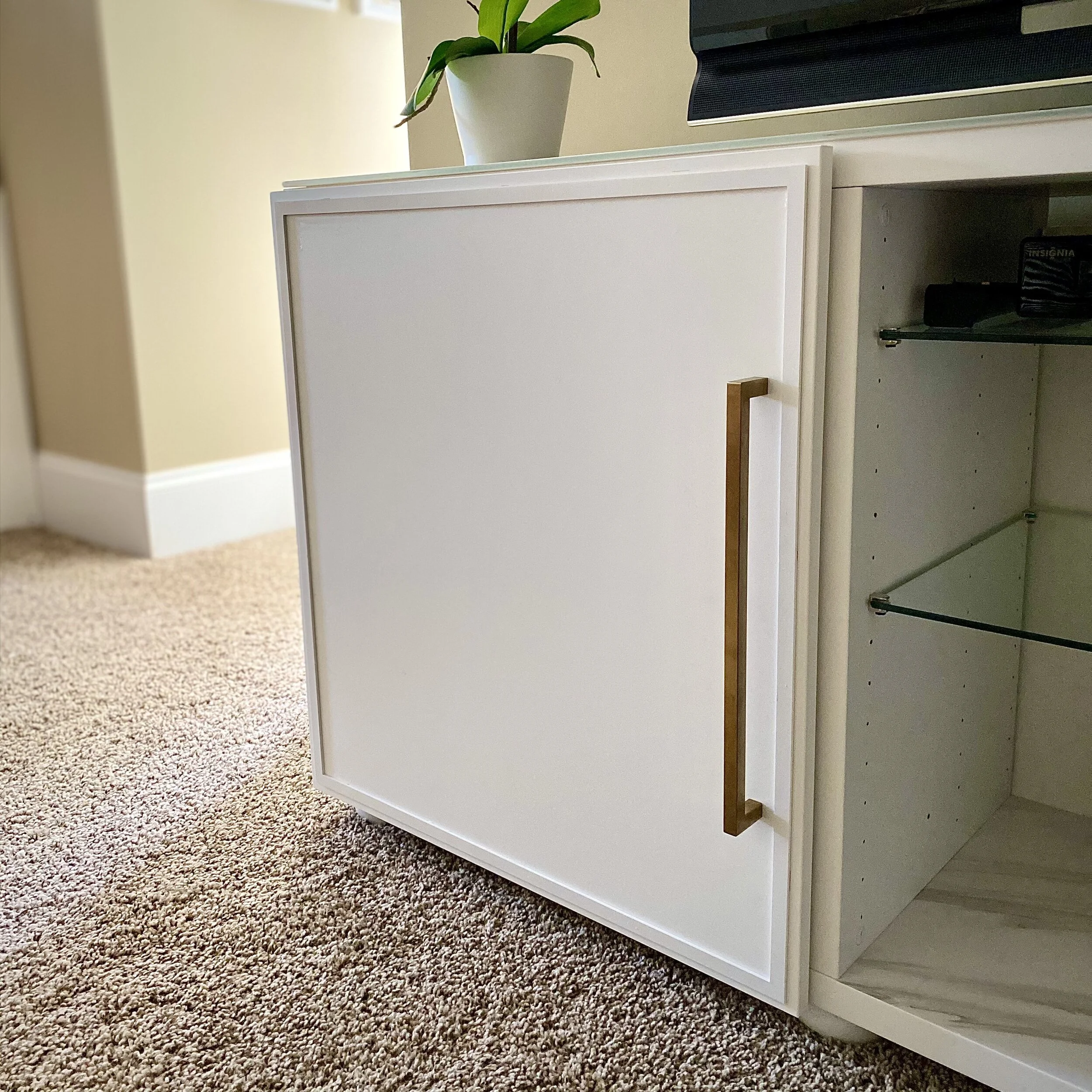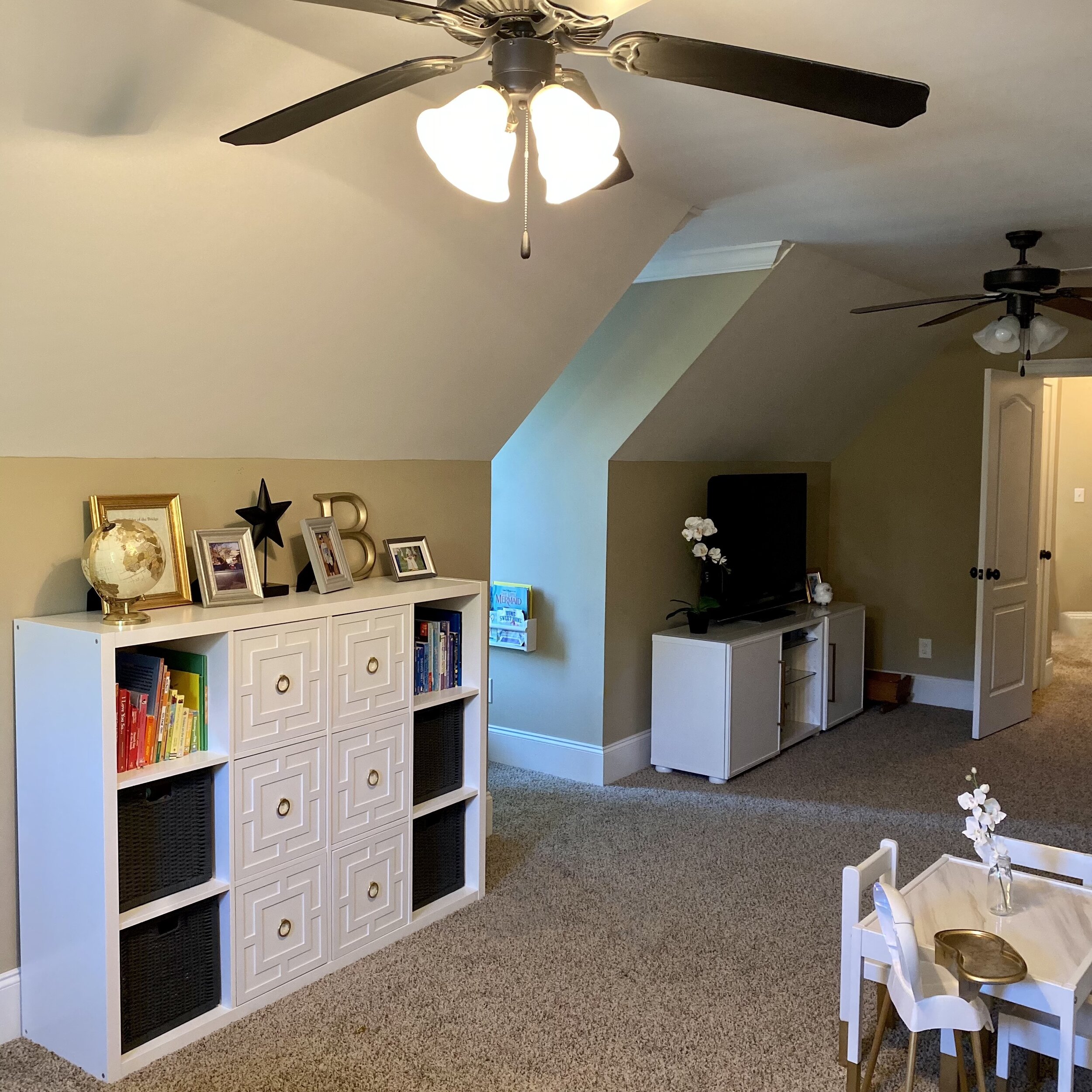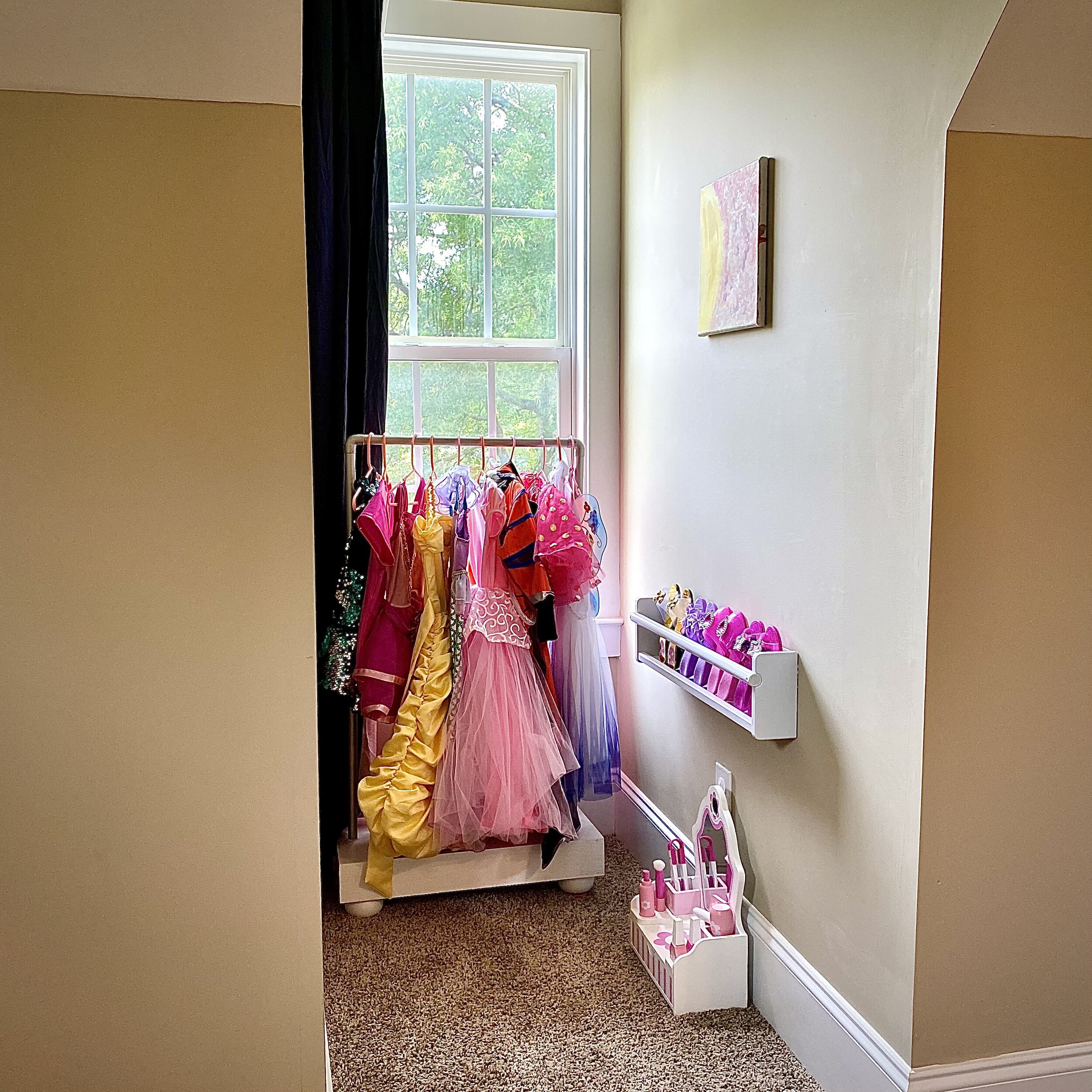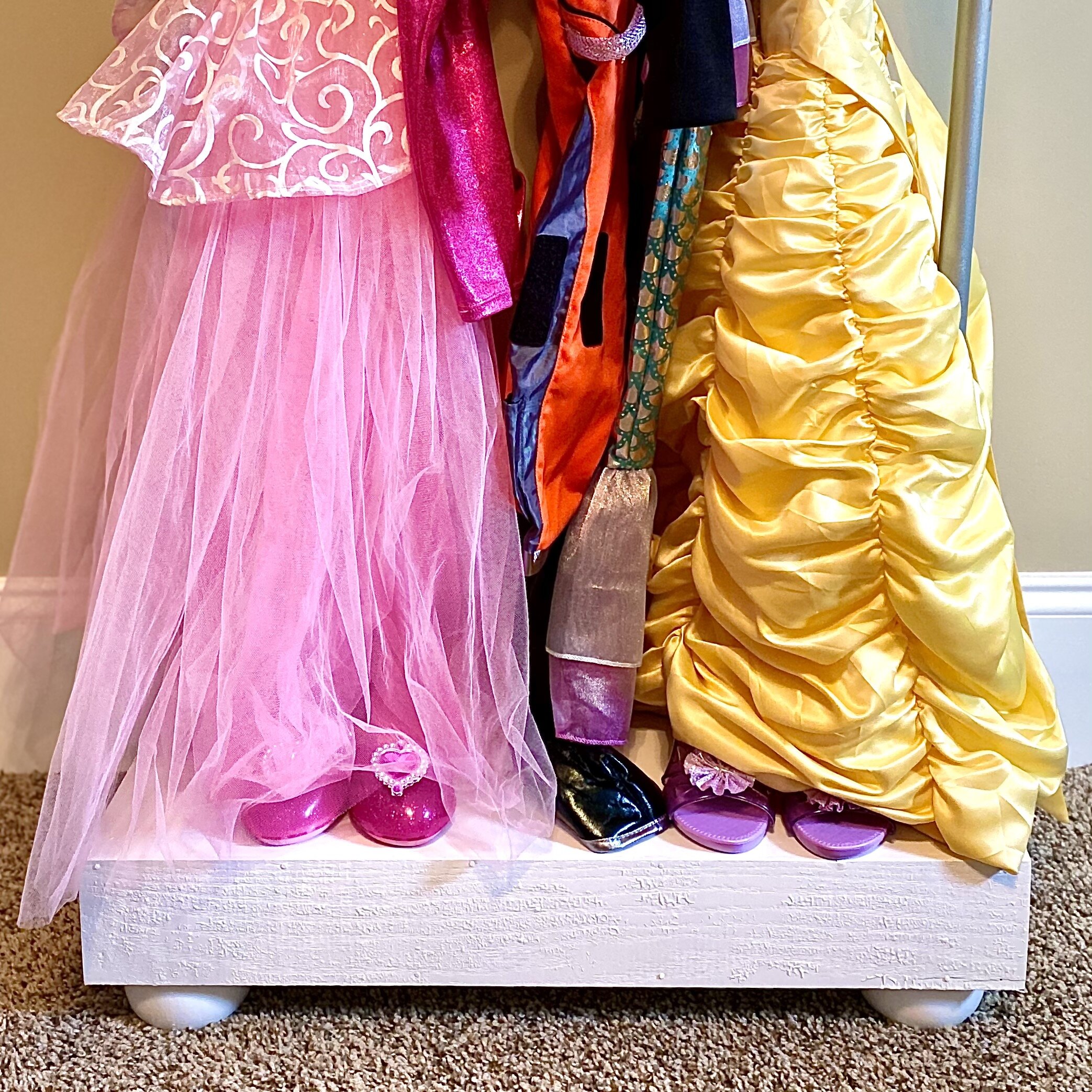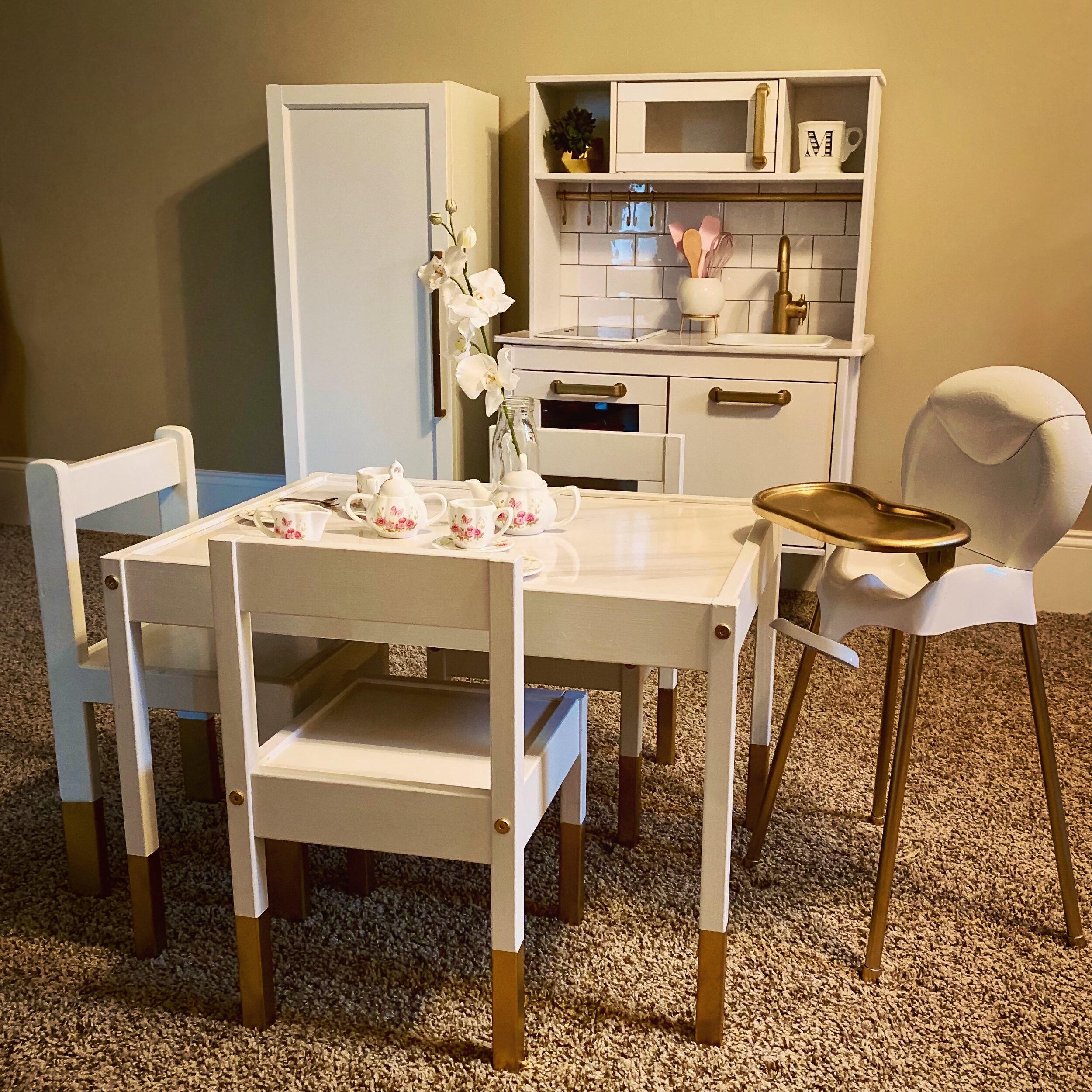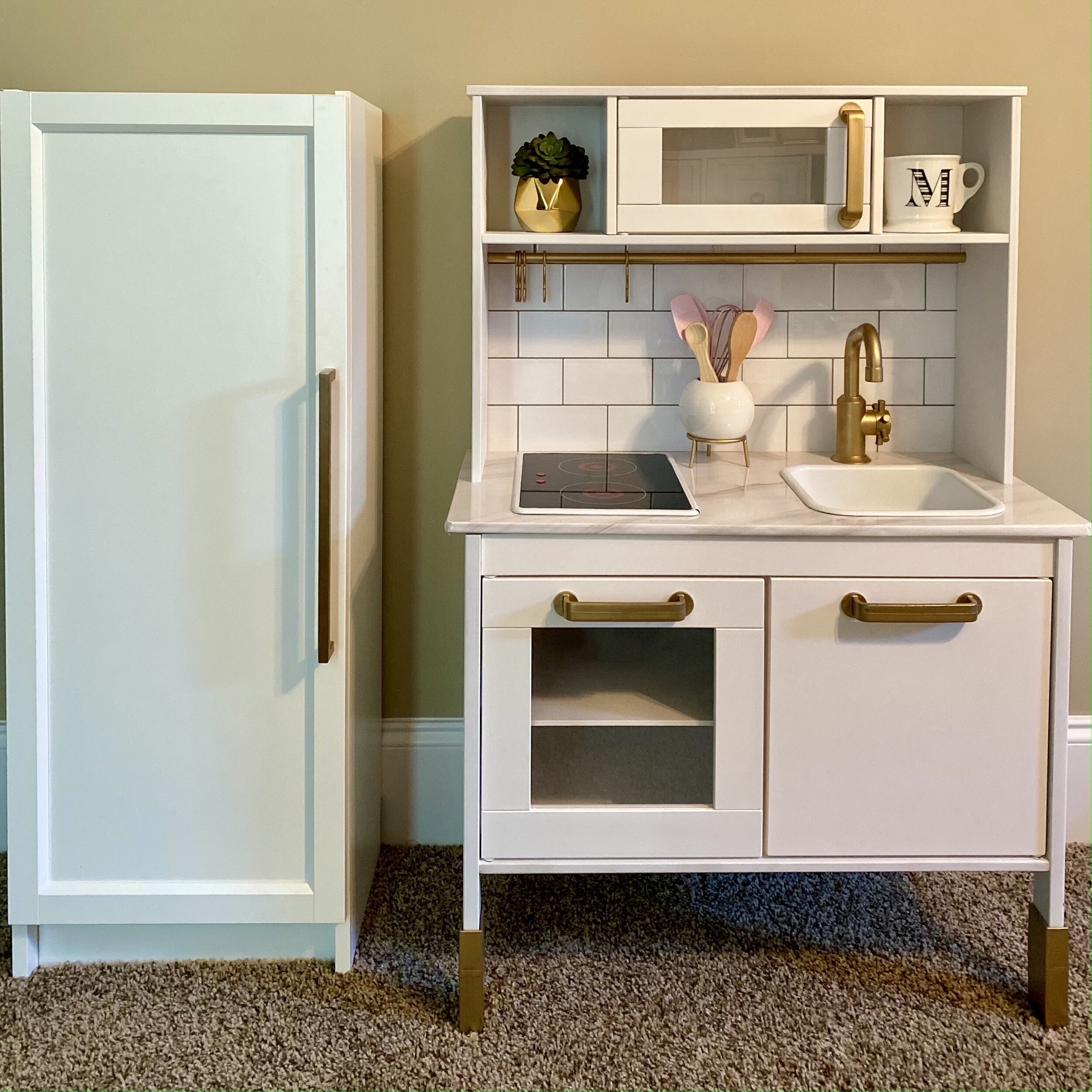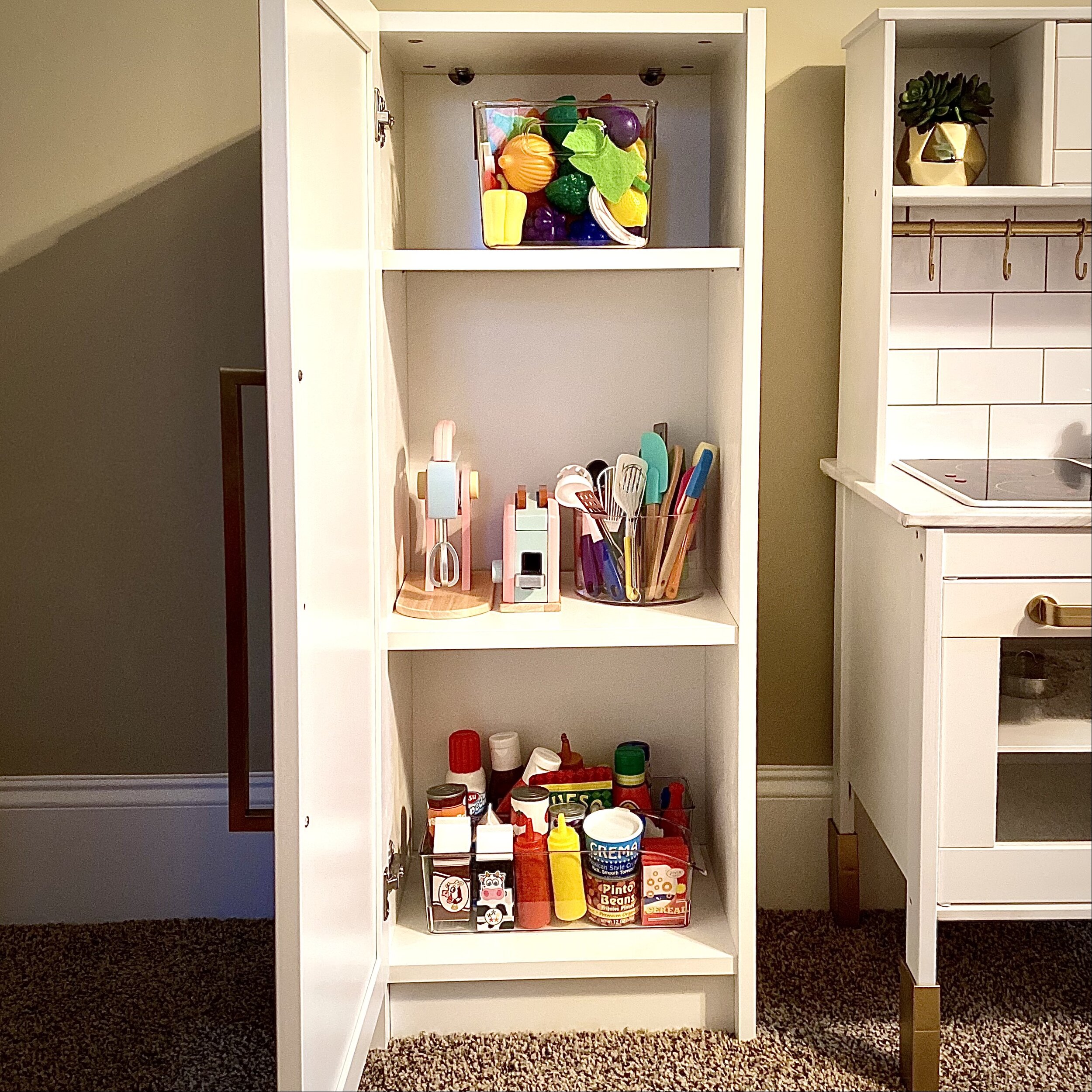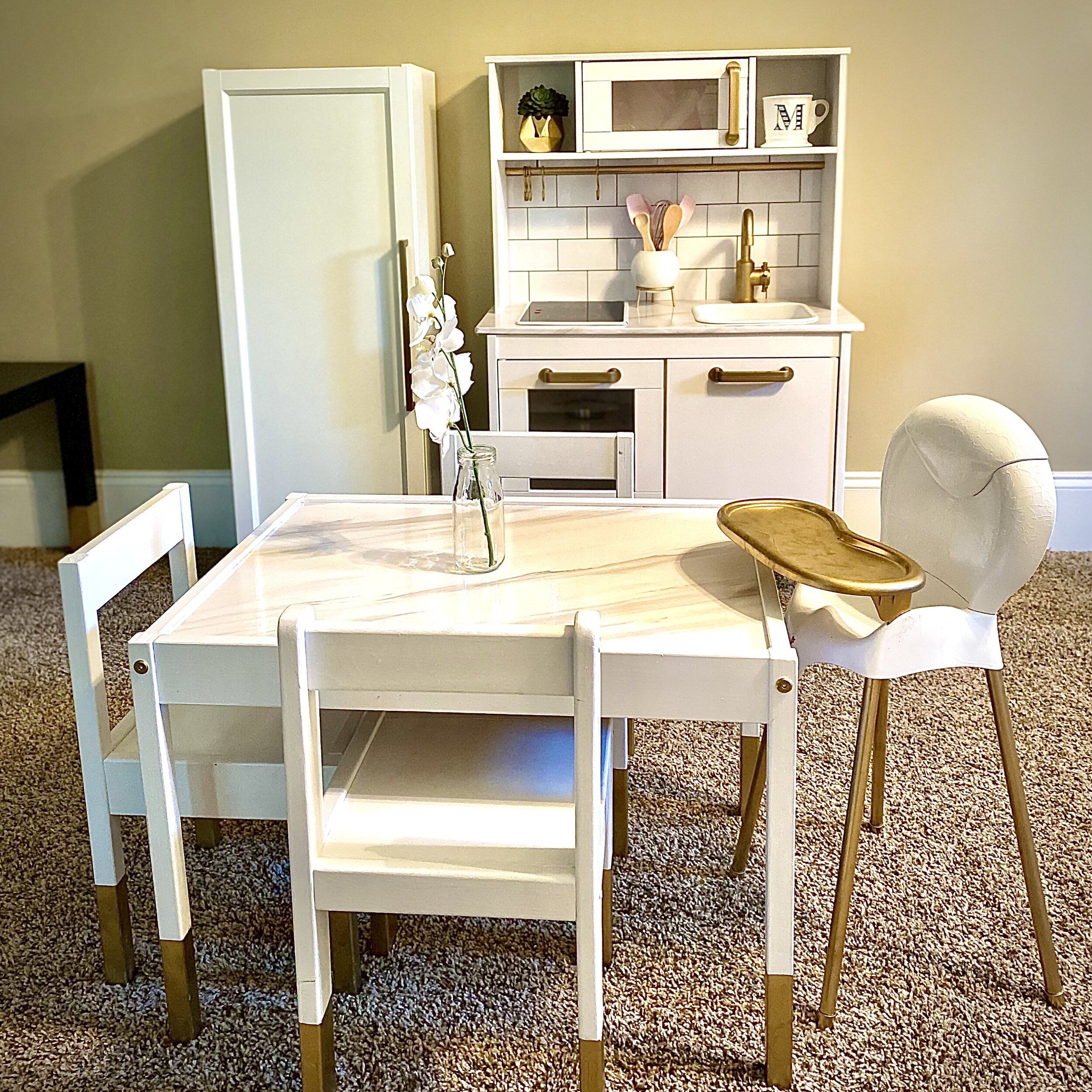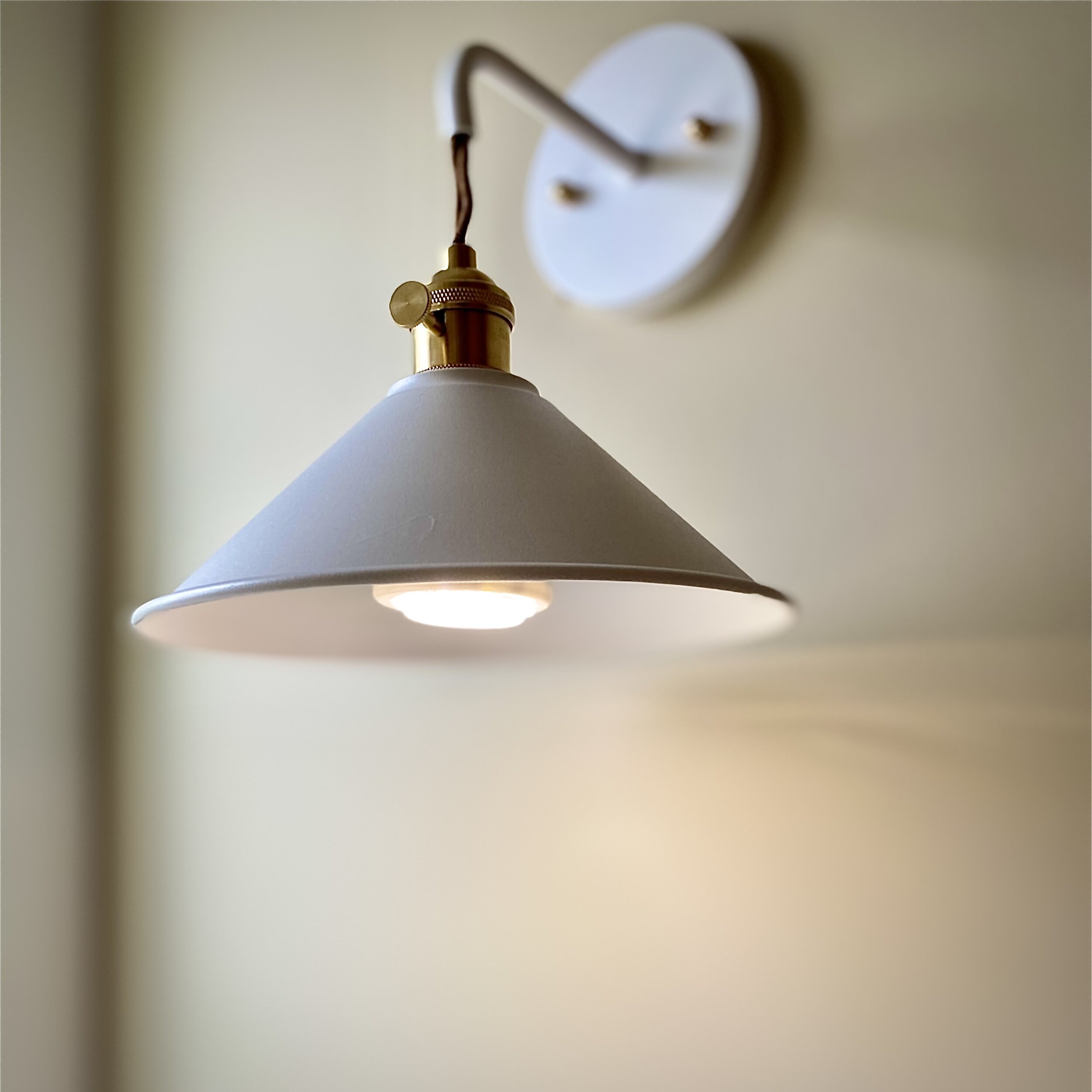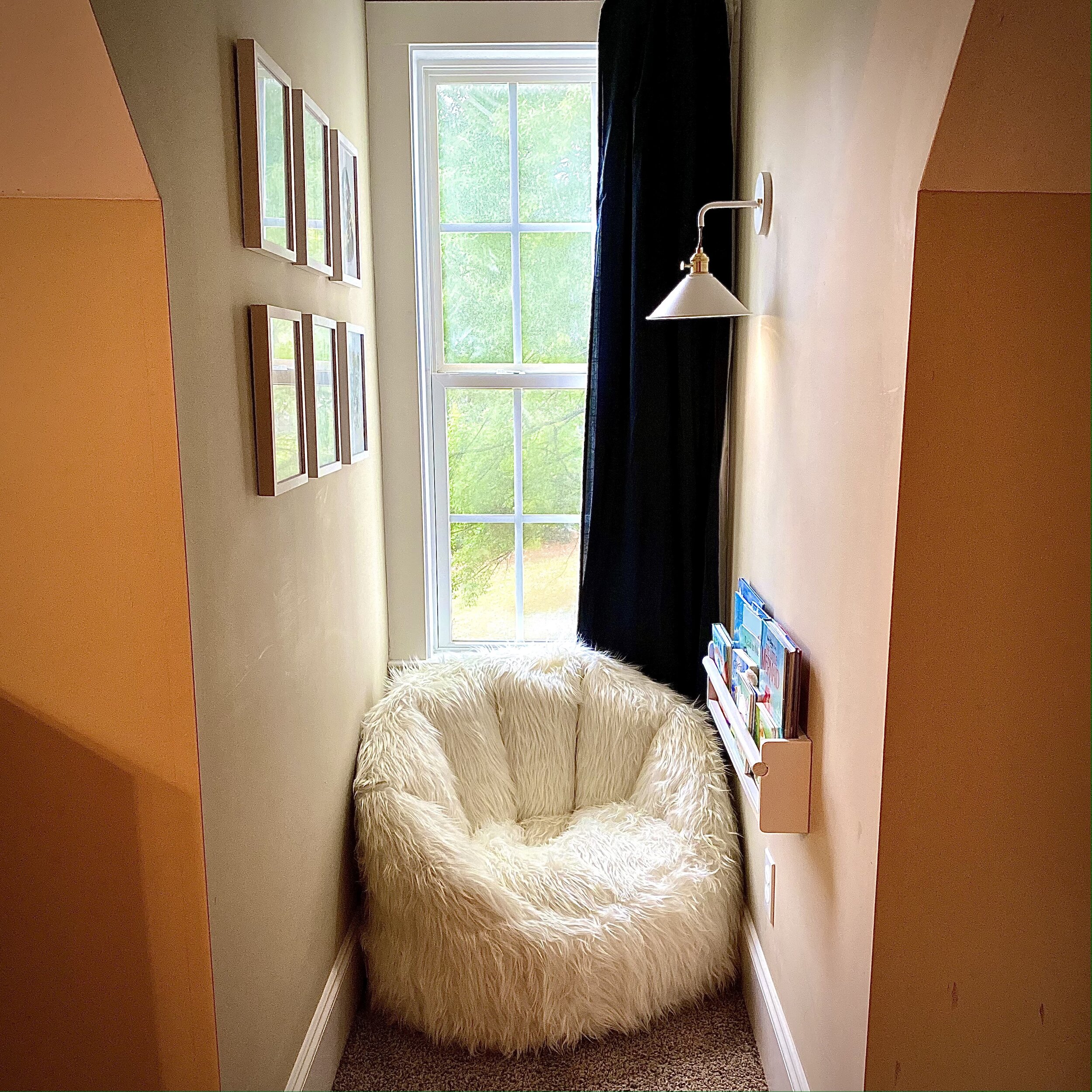PLAYROOM MAKEOVER
What a headache. That’s all I really need to write about a playroom, right? The problem with a playroom is the minute it’s tidy, they mess it up. Immediately. Every time. I have come to the realization that the playroom is such a daunting area because of the amount of stuff and categories of stuff paired with no where to put everything. Clean up takes forever and keeping it even somewhat organized seems impossible. So why not just throw everything into the corner or a cabinet or in a box to clean it up? I know that’s what I did for a while. But putting a system in place where everything has a “home,” or I call them zones below, makes cleanup and upkeep easier. And bonus! Your kids can help keep it organized because they know where everything belongs.
(See my Why Not DIY post for the reasons behind the IKEA theme in this room. Now, I am all about customizing IKEA furniture.)
I had a little added pressure in our playroom because I need it to function as a guest room as well. But dividing a multi-function room into distinct zones can help organize the different functions and allow some separation, even in the same room. It’s a big project, but the effort of coming up with a system to organize a space like a playroom will require less effort to maintain organization. Benjamin Franklin said, “For every minute spent in organizing, an hour is earned.” And I believe that to be true. Although the initial organization can take a lot of effort, the end goal of a large project like this is to save time later and make your life less stressful over time.
Here are a few Mrs. B. steps to help you organize a playroom or kid’s play area:
CLEAN OUT. I have said this in other projects and posts too, but I think it saves time to take inventory of what you have before you start purchasing containers, products, or furniture. That way, you know if you should have smaller bins, larger bins, baskets, bookcases, etc. Especially somewhere like a playroom because kids grow out of toys at different stages or do not play with certain toys for whatever reason. Put all of the items in three categories to start: 1. Keep. 2. Toss. 3. Donate/Storage. There is no need to have items that are no longer in use. I was shocked how many toys in our play room fell into the last two categories. Side note- you can hunker down and do this all at once, or do little by little. It’s easy to get overwhelmed with organization, but remember that getting organized is not going to happen overnight, so go at a pace that works for you (I should also mention that this room took me over six months to complete and I still need to fix have one of the ceiling fans/lights fixed or replaced and I need to go back and paint the whole room… in hindsight, something I should have done before).
CATEGORIZE. After you have cleared out the superfluous toys, it’s time to separate and categorize everything to go back into the space. The specific categories will be unique to the toys, age of your child(ren), and how big your space is. This can be things like Legos, Barbies, music toys, building toys, specific character or themed toys, books, etc. This will also help you decide how you want to organize everything. I created broader categories (or zones discussed below) and then subcategories, which is how I placed items in containers, drawers, cabinets, etc.
CREATE ZONES. For a room like a playroom, with so many different categories, I love to create zones. In this playroom, I created a dress-up nook, a reading nook, TV area, and the play kitchen area; I put all of the puzzles and building toys in one cabinet; baby doll accessories in one area and Barbies in another. And as interests change, you can shuffle around the zones and add/subtract toys as needed. For example, I originally created an art nook for my daughter, but I switched up the room a little bit because she is still a little young for art projects on her own and dress-up is more of an interest for her right now. I can always shuffle things around again and make it an art nook. Creating zones allows one area to be dedicated to a certain kind of activity, which can reduce chaos and allow kids to focus on one activity or one kind of toy. I have already noticed my daughter’s attention span has improved in the playroom because she can focus on one thing, rather than not being able to find toys or getting overwhelmed with toys everywhere. This is also a great way to divide a multi-function room to create distinct areas, like a bedroom, office, or schoolwork. Zones can be as broad or as specific as necessary, and really should fit the needs of your space!
CHORES. Even as you are coming up with an organization system, you can get your kids involved to see how they want it to be organized- what are their favorite toys, where do they want to play or do certain activities, what toys they want to donate. Creating an organized space in a playroom reduces the time it takes to cleanup, for everyone. A wonderful effect of our new playroom has been that my daughter knows where everything belongs and she can put toys back in their place. Imagine that?! You can show your kids where things belong and explain the zones to them, which can lead to their participation in keeping the room organized.
Here is what I created for this room (all linked to other Mrs. B. posts that go into more details about each individual project):
DIY headboard- huge shoutout to my husband for creating the headboard in this room! I gave him a general idea of what I wanted and he nailed it.




